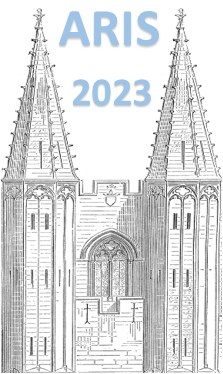Orateur
Description
Accurate nuclear masses not only provide indispensable information on nuclear structure, but also deliver important input data for applications in nuclear astrophysics. The challenge today is to obtain accurate masses of nuclei located far away from the valley of stability. In the past few years, we have devoted to the mass measurements of exotic nuclei below A=100 using the isochronous mass spectrometry (IMS) at the heavy ion storage ring CSRe in Lanzhou. New mass values have been obtained including $^{27}$P, $^{29}$S [1], $^{407}$Ti, $^{44}$Cr, $^{46}$Mn, $^{48}$Fe, $^{50}$Co, $^{52}$Ni [2], $^{44g,m}$V, $^{46}$Cr, $^{48}$Mn, $^{50}$Fe, $^{52g,m}$Co, $^{54}$Ni, $^{56}$Cu [3,4], $^{79}$Y, $^{81,82}$Zr, $^{83,84}$Nb [5], $^{101g,m}$In [6], $^{87m}$Mo, $^{91m}$Ru, $^{95m}$Pd, $^{103}$Sn [7]. Some physics issues have been addressed using our new and improved mass data. In this talk, the experiment details and some selected topics in nuclear structure and in nuclear astrophysics are presented and discussed. We also outline the plans and the technique improvements in our future experiments.
References:
[1] C. Y. Fu et al., Phys, Rev. C 98, 014315 (2018)
[2] C. Y. Fu et al., Phys, Rev. C 102, 04311 (2020)
[3] Y. H. Zhang et al., Phys, Rev. C 98, 014319 (2018)
[4] M. Wang et al., Phys, Rev. C 106, L051301 (2022)
[5] Y. M. Xing et al., Phys. Lett. B 781, 358 (2018)
[6] X. Xu et al., Phys, Rev. C 100, 051303(R) (2019)
[7] Y. M. Xing et al., Phys, Rev. C 107, 014304 (2023)

